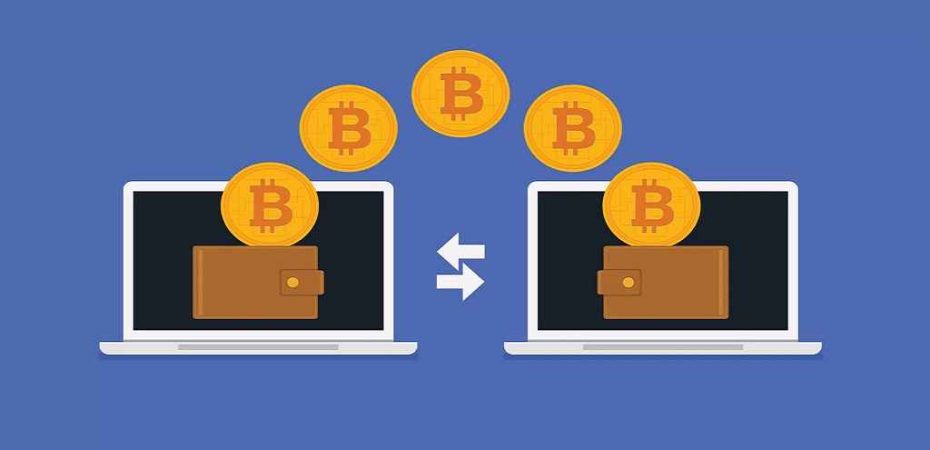There are several consensus mechanisms to confirm transactions on the blockchain. The most famous of these is Proof of Work (PoW), which is used in networks such as Bitcoin, Litecoin, and most other blockchains. This consensus mechanism is necessary to ensure that information about the state of the blockchain is the same in all nodes of the network.
The most important concept in blockchain is the hash function. This is a mathematical transformation that converts any amount of data into a unique numeric value called a hash. A characteristic feature of hash functions is that it is impossible to recover the original data from the resulting hash. Moreover, even a slight change in the original data will lead to a radical change in the hash value.
What happens on the blockchain after a transaction is sent?

When you swap USDT to ETH and send a transaction to the blockchain, it is propagated to all miner nodes or validators and ends up in their mem pools, which can be thought of as transaction queues. Each miner then begins to generate a new block to add to the blockchain.
The block creation process includes the following steps:
- All transactions in mem pools are collected together and form the content of the future block.
- The resulting content is appended to the hash (unique code) of the previous block in the blockchain, creating a link between the new block and the previous one.
- After this, a new hash is calculated based on the combined data. This hash is calculated to satisfy certain conditions, including the difficulty set by the network.
Next comes the verification stage:
- The miner node compares the received hash with the current difficulty. Difficulty is a parameter that determines how difficult it is to create a new block.
- If the calculated hash is less than the set difficulty, this means success and the miner creates a new block.
- If the hash is greater than the difficulty, the miner changes the input data of the block and repeats the calculation until a hash is found that matches the difficulty.
Thus, miners continue to mine blocks by changing data and calculating hashes until they satisfy the established blockchain rules and difficulty. This ensures the security and reliability of the blockchain network.
As soon as one of the network nodes mines a new block, it immediately distributes it to all other nodes. This new block is then included in copies of the blockchain on other nodes. Once a block appears on multiple nodes’ blockchains, all transactions contained in that block are considered confirmed.
Simply put, when a list of new transactions is created, the validating server solves a complex mathematical problem using a brute force method. If it successfully finds a solution, then the transactions are added to the general network. At the same time, other servers working on creating a new block stop, include new transactions in their copy of the blockchain and begin work on the next block.
This process ensures consistency and uniformity of data on the blockchain, as all nodes on the network come to a common agreement on which transactions are considered valid and which to include in the blockchain. The speed of block confirmation in different networks varies significantly, for example, block confirmation on Ethereum takes about 15 seconds.
Why is this so difficult?
This is necessary to prevent attacks on the blockchain. Imagine a situation in which an attacker sends a transaction to the network and spends his cryptocurrency. It then creates its own block, in which the same cryptocurrency is re-spent, sent to a different address. The attacker then sends his version of the block to all other nodes. Thus, two versions of the blockchain arise: in one of them, the cryptocurrency is sent to one address, and in the other version, it is sent to a different address.
To resolve this conflict, consensus mechanisms are used. The principle of operation is quite simple: any network node that detects a blockchain fork discards the branch that is shorter, that is, it contains fewer blocks. Thus, in order for a falsified branch to become legitimate, the attacker will have to mine blocks faster than the rest of the network. Since mining is a very costly and resource-intensive process, the scammer inevitably loses.
It also happens that even with a lack of computing power, there is not enough computing power for a successful attack; several nodes still managed to receive a fake instead of a real block. That is why each crypto service sets a certain number of confirmations, which is necessary in order to consider a transaction completed and safe.
Typically, for small amounts, one to three confirmations are sufficient. However, if you send a very large amount to an exchange, for example, the exchange may require you to wait for several dozen confirmations before allowing you to trade that currency. This is done to ensure maximum security and prevent possible attacks on the blockchain.
Read also:
- Attaining Certified Ethical Hacker Certification: Skills in Ethical Digital Exploration
- How to Buy Bitcoin on eToro: A Beginner’s Guide
- NYC Couple Pleads Guilty to Money Laundering in $3.6 Billion Bitfinex Hack
- Tinypng Review
- What is backtesting, and why is it important for online traders?
- WireGuard vs. OpenVPN: Which VPN protocol is best for you?
- What Is NEM And Is It Really a Coin of the Future



